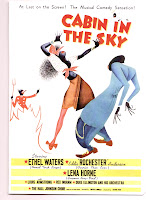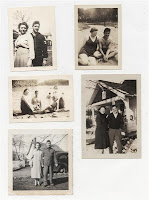His liner notes offer a harrowing tale of marital upheaval, depression, a near nervous breakdown, bruising mood swings; all of which took place around and within the two-week period last holiday season when these marathon solo concerts were recorded. Then again, you could discern all that from listening to the music, which is by turns ecstatic, somber, acerbic, wistful, enigmatic, pugnacious and, above all, relentless. As a solo artist, he’s far removed from his 1970s merry-wanderer days. And what he’s doing lately with this form is by now nothing short of transfiguring. No one, not even Cecil Taylor, has so nakedly stretched himself through spontaneous keyboarding as Jarrett does here. (Did I just write, “Not even Cecil Taylor”? Yes. I did.) You get the sense throughout that you’re listening to someone trying to save his own life with every bent, splintered or rococo phrase he can coax from his shattered nerves. You, too, may get rattled at various points in the journey. But you can’t turn away.
2.) Joshua Redman, “Compass” (Nonesuch)
Building upon the success of “Near East,” his impressive 2007 set of trio riffs, blues and standards, Redman mines the sax-bass-drums format for greater expressive possibilities and delivers his rangiest, most daring soloing in years. Often, he’ll up the ante by having two drummers (Brian Blade, Greg Hutchinson) and two bassists (Larry Grenadier, Reuben Rogers) backing him up on the same track as if the added weight will propel his horn into a higher orbit. Speed and power, however, aren’t as important here as making the best use of the spaces opened up by the rhythm section(s), whose members are every bit as inventive, resourceful and (whenever the occasion demands) discreet as their leader.
3.) Dave Douglas, “Spirit Moves” (Green Leaf Music)
With all the bands he’s got going at the same time, this horn player’s about as busy as a preposition. (That’s a deep, hard wink to those of you who still have a place in your hearts for “Schoolhouse Rock.”) This particular throw-down is coming to you from his Brass Fantasy ensemble: Four horns (Douglas on trumpet, Vincent Chancey on French horn, Luis Bonilla on trombone, Marcus Rojas on tuba) and a trap set (Nasheet Watts), blending more tone color and intricate harmonies into the big-foot brass band genre without skimping on the fun -- or the funk. The album is an homage to the late avant-prankster Lester Bowie, whose archival-pop spirit is honored with shrewd, soulful covers of “Otis Redding (“Mr. Pitiful”) and Hank Williams (“I’m So Lonesome I Could Cry”) and whose insurgency is acknowledged with such originals as Douglas’ send-off to the Bush years (“Twilight of the Dogs”).
4.) Joe Lovano Us Five, “Folk Art” (Blue Note)
The best tenor saxophonist of the boomer generation presses on through the Aughts (Oughts?) imperturbably expanding his own horizons and, as with Redman and Douglas, tweaking traditional combo formats. Here, he gathers four young sensibilities around him to find fresh variations on the hallowed Blue Note tropes of “inside/outside” polyphony and rhythmic blends. The title track is an enchanting marvel of shifty motifs, thematic manipulation and collective interplay that’s both open-ended and tightly-packed. The rest of the disc will keep you on the edge of your chair waiting for the next cagey inspiration to emerge from Lovano, bassist Esperanza Spalding, pianist James Weidman, and percussionists Otis Brown III and Francisco Mela.
5.) Nellie McKay, “Normal as Blueberry Pie: A Tribute to Doris Day” (Verve)
Even the way she pronounces the last syllable of her name (rhymes with “eye”) suggests that McKay will never be everything she appears to be. She’s adorable, to be sure, in a retro, vaguely punky way. And smart enough to make you wary of her intentions here. (Remember the snarky title of her last big-label album, “Get Away From Me”? Nyah-nyah, Norah!) But she turns out to be as tender as she is incisive, letting such warhorses as “Sentimental Journey”, “Close Your Eyes” and “The Very Thought of You” stand and deliver on their own terms while gently unearthing unanticipated possibilities in such Day-related ephemera as “Black Hills of Dakota” and “Send Me No Flowers.” Throughout, her phrasing is impeccable, her command of melody unfettered and her sense of swing nimble enough to please the stuffiest neoclassicist.
6.) Fly, “Sky & Country” (ECM)
Mark Turner may be not be the only underrated-or-overlooked saxophone player on this list (see number 8 and, for that matter, 9). But enough can’t be said for his lithe, deceptively smooth style along with the range of his tonal vocabulary and his keen interaction with the other two members (bassist Larry Grenadier, drummer Jeff Ballard) of this appropriately-named trio. This is the kind of disc where repeated listening may be needed to allow you to get cozy with it. But after a while, you wonder how could have lived for so many months without these guys included in your personal soundtrack, especially when Turner soars as pure and true as he does on “CJ”.
7.) Vijay Iyer Trio, “Historicity” (ACT)
The combination of incantatory aggression and mordant insistence that made up jazz’s cutting edge in the 1960s persists most conspicuously in the work of such young tyros as this pianist, whose trio (bassist Stephen Crump, drummer Marcus Gilmore) is a storm-making machine of fearsome beauty. With the Bernstein-Sondheim classic, “Somewhere” from “West Side Story”, Iyer and company ramp up the inquisitive resentment simmering beneath its plaintive yearning while the ironies embedded in Stevie Wonder’s “Big Brother” resound harder and deeper even without the benefit of a lyric sheet. Iyer’s playing shimmers and soars as often as it challenges and engages; whatever this country’s struggling to become in the wake of the last election, you sense that Iyer’s trio is finding a way to both describe and facilitate the changes.
8.) Jon Gordon, “Evolution” (Artist’s Share)
Gordon’s gorgeous tone, solid center of gravity and quicksilver facility on the saxophone were never in question from the time he won the prestigious Monk competition in 1996. What has gone relatively unnoticed, however, are his considerable gifts as a composer and bandleader; all of which get their most formidable display on this ambitious, varied blend of pieces for large ensemble, duo (with pianist Bill Charlap) and string section. Each piece, no matter what its design or tactics, braces you with a dual charge of broadening possibilities and heightened stakes. The effort alone reinforces one’s certainty that jazz, in whatever form or venue, has a future for anyone who isn’t afraid to issue or take a dare.
9.) John Surman, Brewster’s Rooster” (ECM)
His home nation of Great Britain has no trouble identifying Surman as one of the world’s leading baritone and soprano saxophonists. But he still doesn’t get the props he deserves on this side of the Atlantic for his rich, supple playing and his creative, eclectic body-of-work. Here, he’s placed, like a valuable jewel, in a solid-gold setting (guitarist John Abercrombie, bassist Drew Gress, drummer Jack DeJohnette) that glows throughout with grace, wit and warmth. The interplay between Abercrombie and Surman may evoke for some of us greybeards, the magic aroused forty years ago this year when Surman played on John McLaughlin’s breakthrough album, “Extrapolation.”
10.) Abdullah Ibrahim, “Senzo” (Sunnyside)
We end as we began: With a masterly solo piano recital that serves as both a summing-up of a glorious, tumultuous career and a benchmark for wide-ranging, often intimately-felt self-expression. The 22 short pieces pour into each other as a kind of seamlessly-crafted montage of riffs, phrases, preludes and themes. Some reflect his South African heritage, others the direct influence of John Coltrane and Duke Ellington. It is all of a spellbinding piece and one hopes there is still many more like it to come.




.jpg)
.jpg)